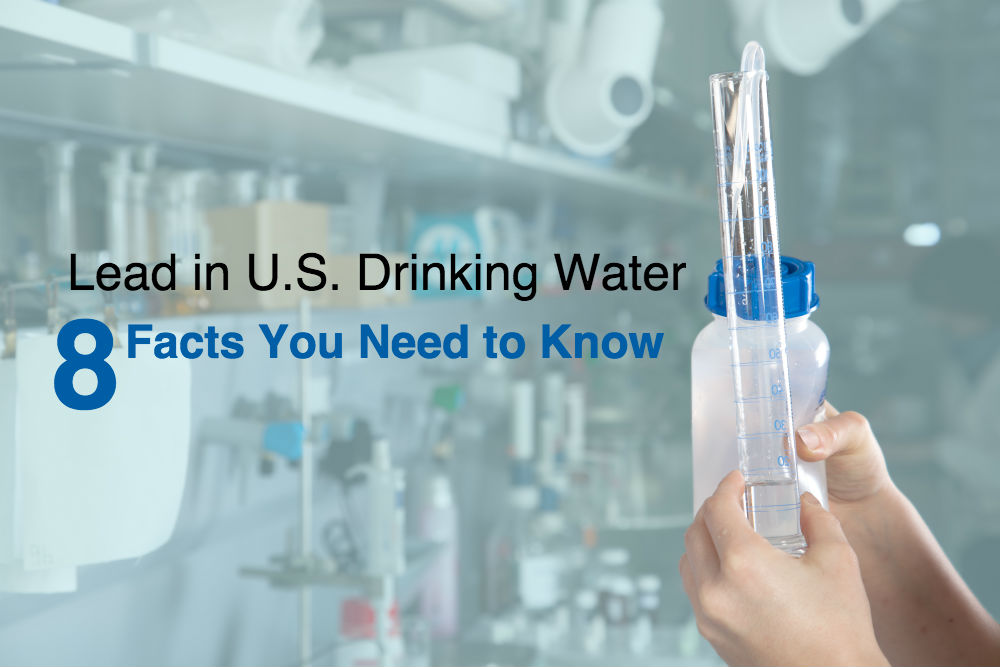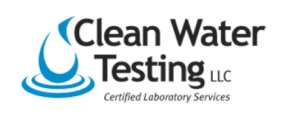
Lead in U.S. Drinking Water – 8 Facts You Should Know
Lead in the water supply has been a concern in the United States for some time. For the last 20 years, government regulations have required municipalities to maintain certain levels and test for contamination on a regular basis.
Unfortunately, the problem is far from solved.
The state of emergency declared in Flint, Michigan in 2016 was a major wakeup call for people all over the country. Problems arose in Flint when the city switched from using Detroit’s water supply to obtaining highly-corrosive water from the polluted Flint River.
The following facts will help you understand the risks of lead contamination in your home and what steps you can take to protect yourself and your family.
1. Why Lead is a Health Concern
Lead is a naturally occurring metal, but it is also toxic to humans. When ingested, it can accumulate in the body potentially causing a variety of health complications such as developmental issues, increased cancer risk, severe damage to the nervous system, reproduction system and other organs, as well as high blood pressure and anemia.
Severe cases of lead poisoning may cause convulsions or seizure and result in death. The consequences of lead poisoning are irreversible.
The World Health Organization (WHO) says lead poisoning causes approximately 143,000 deaths globally each year.
While the Environmental Protection Agency (EPA) has levels it considers acceptable, there is no level of lead exposure that is considered safe. The EPA estimates around 40-million Americans are being exposed to lead-contaminated drinking water that it would consider a health risk.
2. How Lead Gets in the Water Supply
In most situations, lead contamination comes from outdated plumbing. Older lead pipes can exist within a municipality’s infrastructure, or there can be leaded pipes and fixtures within an individual residence.
Lead leaches into the water supply when corrosive water comes in contact with pipes and breaks the metal down, which results in lead particles contaminating the water.
In Flint, around half of the city’s service lines to homes were made of lead. The water was not being treated with an anti-corrosive agent, which the federal government requires.
The United States Congress banned the use of lead solder and restricted the lead content of faucets and pipes in 1986. However, homes built prior to the ban may still have plumbing that contains lead.
It’s believed that showering in water containing lead does not pose a health risk. But you should not drink, cook, or brush your teeth with water containing lead.
While lead can occur in water sources naturally, it rarely enters the water supply from lakes and rivers. People with private wells can experience lead contamination too. That’s because older wells may have lead in the packer, which is used to seal the well. And certain brands of pumps have components made of brass, which could also contain lead.
3. Young Children Are Most at Risk for Lead Poisoning
The EPA says 10% to 20% of the typical adult’s exposure to lead comes from contaminated drinking water. But the number is much higher for babies. 40% to 60% of their exposure to lead comes from water because it gets mixed with the formula they drink.
Health experts say the risk for infants and toddlers is higher due to the fact their bodies absorb four to five times as much lead as adults. To make matters worse, the Natural Resources Defense Council (NRDC) points out that children drink two-and-a-half times as much water as adults in proportion to their body weight.
While the effects of lead poisoning in children can vary from child to child, the biggest risk is severe developmental delays. A 2016 article from Popular Science explains that when cells in the brain absorb lead, it often impacts the hippocampus, which is essential to learning and memory. Cerebral lead absorption also impacts the frontal cortex, which is responsible for attention, planning, and abstract thought.
A child or infant with symptoms of lead poisoning may show slow growth, have learning difficulties, behavioral issues, become easily irritated, and show signs of fatigue.
The best way to know if your child is dealing with lead poisoning is to get a blood test. This is something your pediatrician should be able to provide. In fact, it was a pediatrician who first sounded the alarm in Flint after she noticed blood levels in children two to three times the typical amount.
4. Hot Water Increases Lead Exposure
If you think there is lead in your water, or if you know you have lead pipes where you live, do not boil your water before using it. This will only make things worse. Boiling water causes some of it to evaporate, which will actually increase the lead concentration in your home’s water.
Hot water is also much more corrosive than cold water. It causes lead to dissolve more quickly than cold water. For this reason, if you suspect your water contains lead, you should avoid cooking with it completely, and use a completely different source for mixing baby formula.
Water that has been sitting in your home’s plumbing system for six hours or more may also have a higher concentration of lead. The Center for Disease Control (CDC) recommends flushing your system if you want to reduce your exposure. Visit the CDC’s website to learn more about how to do this.
5. A Water Softener Alone Cannot Remove Lead
A water softener alone is not designed to eliminate lead from a home’s water supply. Water softeners reduce the hardness of water by removing things like calcium, magnesium, and iron.
The most-permanent solution to in-home lead contamination is to replace all the outdated plumbing that contains lead. This may prove to be very expensive and is not a practical alternative for many people.
Thankfully, there are other water treatment and in-home filtration options that can reduce your exposure to lead in drinking water.
6. A Reverse Osmosis System is One of the Best Solutions
An effective way to treat your water for the removal of lead is to have a reverse osmosis (R.O.) system installed underneath your kitchen sink. This will eliminate contaminants like lead directly at the point of use in your home.
An R.O. system will remove the vast majority of lead particulates from the water, so it will be safe for your family to use for drinking and cooking. It will also filter out many other contaminants leaving you with pure, great-tasting water.
Water-Right offers the Eclipse R.O. as well as the Impression Series R.O. Both of these reverse osmosis systems effectively reduce lead contamination.
You can also get our reverse osmosis systems under the Evolve or WaterCare brands with the Clear Flo and UltroWater systems along with R.O. Faucets.
7. Lead is Undetectable by Human Senses
Residents in Flint, Michigan definitely noticed issues with their water when the city switched from Detroit’s supply to the Flint River. It smelled bad, tasted strange, and looked dirty, but it wasn’t the lead they were observing.
The noticeable difference in their water came from iron, which was a sign it was highly corrosive, dissolving iron from the water mains and affecting the appearance, odor, and taste. However, people were not able to detect the lead, which was also coming from pipes.
That’s because lead is completely odorless, tasteless, and invisible when dissolved in water.
If you suspect there’s lead in your water, the first thing you should do is contact your water provider for information. The CDC says to begin by asking your water authority if your water has lead levels above 15 parts per billion (ppb), which is the maximum allowed by the EPA. Then ask if the service pipe (or header pipe) at the street has lead in it.
If the lead isn’t coming from your water provider, you need to test for lead contamination coming from inside your home.
8. Use a Certified Lab to Test Your Water for Lead
While there are DIY lead testing kits you can purchase for in-home use, these kits are known for being inaccurate and unreliable.
 The best way to know what is really in your water is to have a state certified laboratory perform a test.
The best way to know what is really in your water is to have a state certified laboratory perform a test.
Water-Right proudly provides these services with our own in-house laboratory, Clean Water Testing in Appleton, Wisconsin. We make the testing process simple, fast, and affordable. Our Home Safety Package includes parameters to test for lead as well as arsenic, fluoride, bromide, chlorides, nitrates and other contaminants.
Water testing is a service we make available to dealers offering Water-Right products. These professionals can come to your home and make sure a sample is obtained in the appropriate way. Clean Water Testing will then provide a comprehensive report with your results.
You can call Clean Water Testing at 800-801-7590 for more information.

